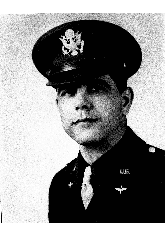
Farid Simaika (EGY)
Honor Diver (1982)
FOR THE RECORD: OLYMPIC GAMES: 1928 silver (platform), bronze (springboard); AAU NATIONALS: 3 (1m springboard, platform); AQUACADES: 1937, 1939, 1940.
Simaika was born on 12 June 1907 in Alexandria, Egypt, while the country was still a kingdom. His father, Bassili Bey Simaika, was director of Alexandria customs for the port of Alexandria. Both his uncles, Wassif Simaika and Morcos Simaika carried the titles of Pasha. Morcos Simaika was the founder of the world famous Coptic Museum in Cairo and was decorated by several European crowned heads for his work. The Simaikas were one of the oldest Coptic families which can trace their ancestry to the middle of the 17th Century. Before moving to the United States in the 1926, Simaika was already a well-known Egyptian diving champion. He also held an Egyptian pilot’s license.
Living in Los Angles and diving under coach Big Jim Ryan at the Ambassador Hotel Swimming and Athletic Club, Simaika won the 1927 AAU low board championship and came in second place to ISHOF honoree Pete Desjardins in the 10m platform event. The next year, unable to represent the USA because he was not a citizen, Simaika represented Egypt at the 1928 summer Olympic Games, where he won a silver medal in the 10-meter platform event and the bronze off the 3-meter springboard. His silver medal came after one of the most curious incidents of the Olympiad. At the conclusion of the event, it was announced that Simaika had finished with top points at 99.58, and the Egyptian flag was hoisted and the Egyptian national anthem sung for the first time of the meeting. But soon afterwards it was announced that a majority of the Judges by a vote of 5 to 4 had decided that Desjardins of Miami was the winner with the best general average of points for the eight dives. His coach, Big Jim Ryan was furious at what he consider to be blatant racism and years later he got his revenge when another non-white diver of his, Sammy Lee would win gold off the 10m platform at the 1948 Olympic Games.
Simaika went on to win the US high diving championships in 1930, 31 and 32, but was declared a professional and disqualified from competing in the 1932 Olympic Games for receiving money for diving exhibitions in Egypt, where he was held in great favor being the first Egyptian Olympic medalist. In fact, Farid and his wife were both invited to King Farouk’s wedding in the mid 30’s, which was quite an honor for someone from a Coptic (Christian) family. Simaika’s performance in the 1932 US championships so impressed the Japanese that they invited him to compete in the Japanese high diving competition held in Tokyo after the LA Olympic Games and he won the Japanese title with ease.
In the 1933, Simaika went on to star in the water shows at Chicago’s Century of Progress and in 1934 he started touring the world giving diving exhibitions with fellow Olympic and A.A.U. diving champion Harold “Dutch” Smith. In 1937 the pair joined the Billy Rose Aquacade in Cleveland and later New York. One of their high diving acts included a blind-folded tandem act, which they performed for a Metro Golden Mayer short called “Double Diving” – which provides one of the earliest demonstrations of what is the Olympic sport of synchronized diving. He also performed a 2-a-day 66-foot tower dive at the Canadian National Exhibition in Toronto.
In March of 1942 Simaika received American citizenship, and on 3 August 1942 enlisted in the U.S. Army hoping to be a pilot. However, too old for pilot school, he joined the Officer Candidate School. Because he was also an amateur photographer and had a private lab in his home, he was assigned to air intelligence. According to ISHOF honoree and war hero, Colonel Frank Kurtz, Simaika was working on a photography process that would distinguish camouflage foliage on the ground from live foliage. As the Bomber Wing Intelligence Officer, he volunteered to go on what turned out to be his final B-24 reconnaissance mission. Because the mission was quite long and the aircraft was well beyond having fighter protection, the plane was shot down over water near the Celebes Islands in the South Pacific. Farid apparently survived the crash because Kurtz later reported that an Australian Coast Watcher had come across the bodies of some American soldiers who had been beheaded by the Japanese. Evidently the Coast Watcher had a previous association with swimming or diving and he recognized Simaika’s head. For his service, Farid was awarded the Distinguished Flying Cross and promoted to First Lieutenant posthumously. Today, a major road in Cairo’s Heliopolis district is named after him.
